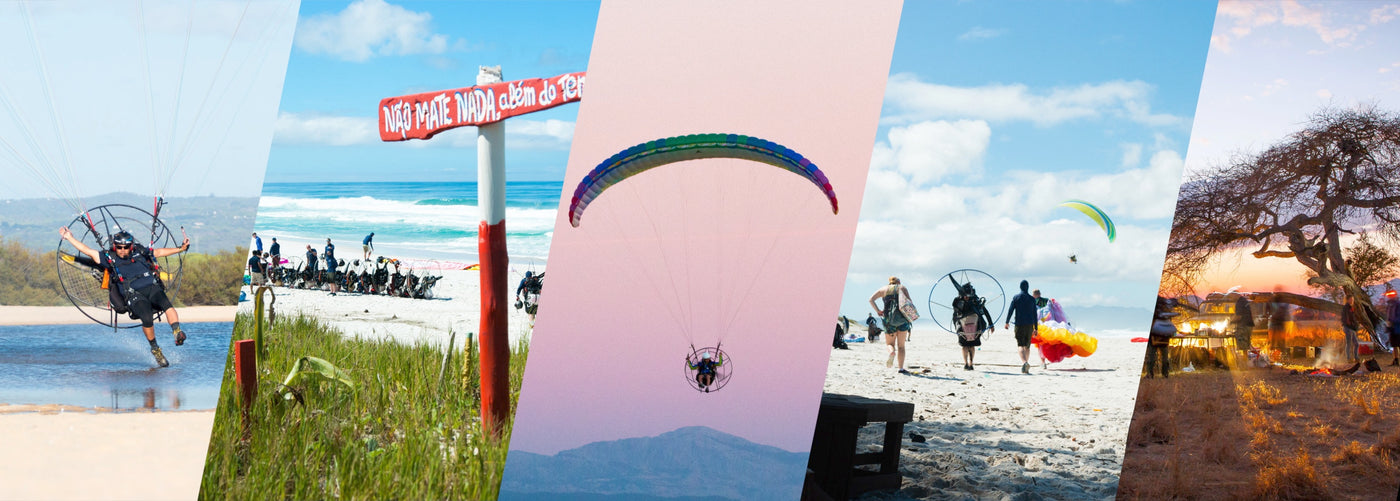I’ve spent the last 20 years running SkySchool, and in that time, safety has always been my number one priority. Whenever I explain paramotoring to people who don’t fly, the reaction is usually the same: “That sounds dangerous!” But the reality is, paramotoring is statistically the safest form of powered flight.
Why? Because we fly slowly, and only when the weather is calm. Unlike paragliding, which often requires strong winds or thermic conditions to stay airborne, paramotors allow us to fly in smooth, stable air. And in the unlikely event of an engine failure, we simply glide to the ground, just like a paraglider. When flown correctly and in the right environment pilots very rarely have accidents.
That said, many pilots still make the same avoidable mistakes. So in this post, I want to share not only my essential safety tips, but also the most common errors we see and how to avoid them.
1. Skipping Professional Training
One of the most dangerous things a beginner can do is attempt to teach themselves, rely on online videos or only complete half of their training. Without proper instruction, you’re likely to develop bad habits that can lead to serious accidents. The APPI PPG syllabus allows us to guide students step-by-step through a tried-and-tested training system, ensuring they learn the correct techniques from day one. Just because the sport is deregulated in the UK doesn’t mean people should try to learn with a mate down the local park after watching a few YouTube videos!

2. Ignoring Weather Conditions
Too many new pilots get excited about flying and end up doing so in completely unsuitable conditions. Strong winds, powerful thermals, and gust fronts from distant thunderstorms can be deadly. As part of our training, we teach students how to read forecasts and assess on-site conditions to ensure they only fly when it’s genuinely safe, usually in the early mornings or late afternoons during spring, summer, and autumn. Remember: if in doubt, don’t fly!

3. Intermediate Syndrome
We often hear of recently qualified pilots trying to run before they can walk—attempting manoeuvres they’re not ready for, flying from challenging sites, or launching in unstable air. Building a solid foundation of skills is critical. In the UK, where flying opportunities can be weather-limited, it’s essential for pilots to keep practising their ground handling to stay current and safe.

4. Starting the Engine on the Ground and Skipping Pre-Flight Checks
During training, we emphasise the importance of starting the paramotor on your back, not on the ground. It’s a golden rule, yet many forget it after qualifying. Equally, pilots often skip their pre-flight checks. A loose line, low fuel, or faulty throttle cable can cause major issues. Always carry out a thorough inspection of your wing, motor, harness, and fuel system. A five-minute checklist could save your life.

5. Flying Too Low or Close to Obstacles
Power lines, trees, and buildings are serious hazards, not just due to collision risk but also because of the turbulence they create. Always maintain safe altitude and clear distance from all obstacles.

6. Using the Wrong or Poor-Quality Equipment
Not all gear is created equal. Beginners are often tempted by cheap or second-hand equipment without knowing what suits their needs. That’s why we always advise our students to fly before you buy. SkySchool has a lot of experience when it comes to Paramotoring and ParaTriking equipment. We therefore only sell what we believe to be the best products on the market.

7. Flying Alone and Disconnecting from the Community
Flying solo may sound romantic, but it’s risky—especially when you’re just starting out. Staying connected with other pilots is one of the best ways to stay safe and informed. At SkySchool, we’ve built a strong community of former students who fly together, share tips, and support each other. Whether through clubs, fly-ins, or our alumni network, staying engaged helps you keep learning and stay safe.
That’s my two pennies’ worth for today! If you have any questions or want to find out more about joining a course, feel free to contact me directly or visit www.skyschooluk.com.
For those that missed it, check out the SkyWeek Namibia film














